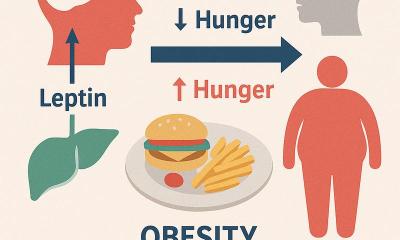Europe's diabetes dilemma
`We don't need a crystal ball to predict the diabetes situation in Europe´
The difference in the prevalence of diabetes in European countries is striking. Meike Lerner asked Sir Michael Hirst, Vice President of the International Diabetes Federation, why, for example, Germany has the highest number of diabetics (about 12% of the population) whilst the United Kingdom shows just 4%.

Sir Michael: Probably one of the reasons is that more work is done in countries like Germany or Switzerland to identify people with a metabolic syndrome and diagnose them earlier. In the UK a number of people are as yet undiagnosed. But there is a true difference in the prevalence even within special regions, for example, the islands of Sardinia and Corsica, where the incidence of diabetes is very considerable and they are geographically close. So, between the UK and Germany there is also a true difference. I’m not certain that we fully understand the reasons why. The prevalence in the UK is certainly rising slightly faster than in Germany.
Does this mean the UK takes more effective preventive measures than Germany?
No, to the contrary! The UK has a real problem with obesity, particularly in Scotland, which has the world’s worst record for the growth of obesity. This is a historical thing: The Scottish diet is one of sweets and carbohydrates. I think the Glasgow region is the No.1 capital of fats. And the drivers for diabetes certainly existed in the UK. That’s why all the health economists expect the figures to rise and expect the costs to become greater and greater each year.
These differences are not only true for Type 2 diabetes but also for Type 1. In Scotland again, the prevalence of Type 1 is higher than in England and is one of the highest in the world. Nobody is terribly sure why this should be. Genes explain some cases and there are some environmental triggers, which are not fully understood. There are factors, such as whether there are infections, or things that tend to make the figures higher than in Britain or in many other European countries. The reason is unknown; otherwise we could do something about it.
There are other dramatic figures: The diabetes atlas shows that in 2003 the estimated figures for diabetes for the EU averaged 8.9%. The actual figure for 2006 was 8.6%. The Netherlands, for example, expected 5.1% in 2025, but had an actual prevalence of 7.3% in 2006. This suggests that, in some of the countries with lower prevalence rates, there is either an under-recording, or inaccurate figures, or – as I suspect – a lot of people who have diabetes but have not been identified, whereas other countries are much quicker in recognizing the disease and starting to treat it. These are dramatic examples of where future predictions have already been overtaken. That, of course, is a real challenge for the future.
Is it also to do with increased awareness of diabetes?
Yes, awareness certainly is one point. One of the advantages of creating awareness is that people are being diagnosed and you can start to treat them better and earlier than in the past.
Considering the increasing number of young diabetics, maybe the figures – especially the costs to healthcare systems – will become even worse.
Yes. The whole lifestyle of today encourages obesity, which is the reason for an increasing number of young people suffering Type 2 diabetes. The tragedy is all the greater because a family is probably unlikely to make all the lifestyle changes that are necessary. In case of my family, when my child was diagnosed with Type 1 diabetes we changed everything to help my daughter, such as meal times etc. I think that families with children with Type 1 diabetes will make these chances in order to support their child.
With Type 2 the problem is the pattern of family life, which is sitting in front the TV, taking very little exercise and eating unhealthy food. As long as that way of life does not change dramatically, the young person with Type 2 diabetes will go on to develop complications and be unhealthy and become a burden on the health service as well as on the family.
What is the typical age of a Type 2 diagnosis in children?
It varies. Today there are very few youngsters, but the number is increasing and that’s a wake-up call for public health specialists. We only have to have a look at USA; we don’t have to wait or look into a crystal ball to predict what will happen in Europe. We can recognize the same trends in Europe as in the US.
Quite apart from the quality of life of these young people there is a huge burden on health services because of the disease itself and because of the co-morbidity and, not least, because of the poor working conditions for those young people in future years. They cannot do a normal job because of hospitalization and/or poor health in general.
Are there estimates of how much a young diabetic can cost a healthcare system in his or her entire life time?
I cannot quote a figure, but there are figures for the general economic impact of diabetes. For example, in 2007 the healthcare costs in France were $20.8 billion and in Germany $39.0 billion. In the European region it was $152.4 billion!
The IDF
Founded in 1950, the International Diabetes Federation (IDF) leads the global diabetes community as an umbrella organization of over 200 national diabetes associations in over 160 countries. Representing the interests of the increasing number of diabetics and those at risk, the IDF’s mission is to promote diabetes care, prevention and a cure worldwide.
Led by the IDF, in December 2006 the Unite for Diabetes campaign secured a United Nations Resolution on diabetes; this encourages UN Member States to develop national policies for the prevention, treatment and care of diabetes in line with the sustainable development of their healthcare systems, taking into account the internationally agreed development goals, including the Millennium Development Goals. The Federation continues to lead the global effort to implement Resolution 61/225 under the Unite for Diabetes banner.
01.09.2009











